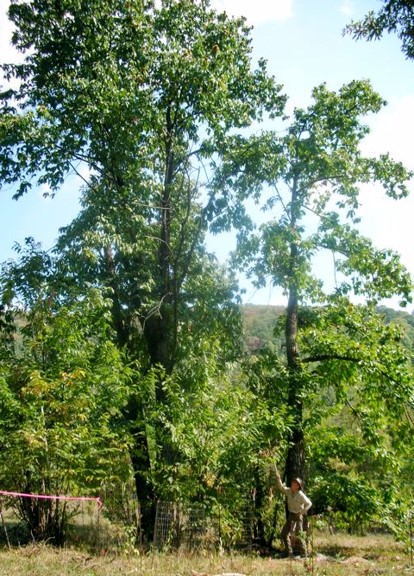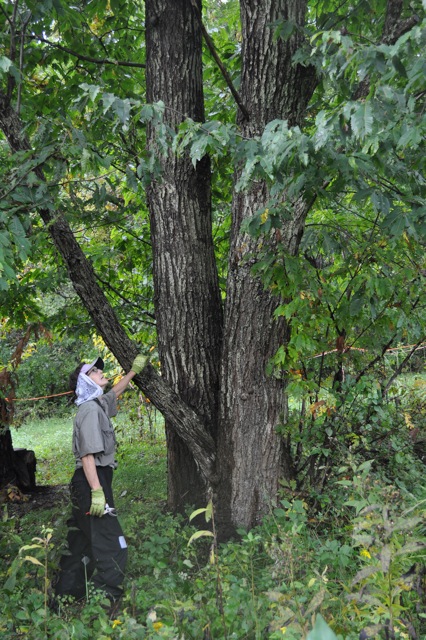
American Chestnut Cooperators' Foundation

Integrated Management for Chestnut Blight Control
(Lesesne Research)
A cooperative project with the Virginia Department of Forestry, American Chestnut Cooperators' Foundation and Virginia Tech, demonstrating integrated management for chestnut blight control. Scions of large, surviving American Chestnut (Castanea dentata) trees were bark grafted in 1980 on rootstocks of American Chestnut trees in the Lesesne State Forest, Virginia. When the grafts were 2 and 3 years old, natural blight cankers on the trees were inoculated with a mixture of European and American hypovirulent strains of the blight fungus. In 2000, the blight canker severity on the grafts is still very low. These trees have been producing nuts since 1989.
Closeup shows the tallest tree which has two stems because two scions were grafted. Eric Hogan, graduate student at Virginia Tech, points to a 15.7-inch dbh stem and the arrow points to a superficial canker on the other stem. These cankers do not affect the quality of the wood. (2000)
Tallest tree in the background (same as close-up) is 61 feet. Nancy Robbins, who studied the spread of hypovirulent strains on this tree, is leaning against a blight-killed stem directly in front of it. Nearly all the chestnut stems in this plantation which were not grafted with blight resistant scions are continuously killed by blight and re-sprout from the stumps. (1997)


Integrated management for chestnut blight control has been successful only when the chestnut trees have at least low levels of blight resistance, and competing hardwoods are controlled by cutting, and the location is favorable: at altitudes below 2,500 feet, in well-drained, acid, sandy-loam soils, on slopes facing from N to E which receive good moisture from surrounding slopes. (Cooperative project with the Virginia Department of Forestry, American Chestnut Cooperators' Foundation and Virginia Tech)